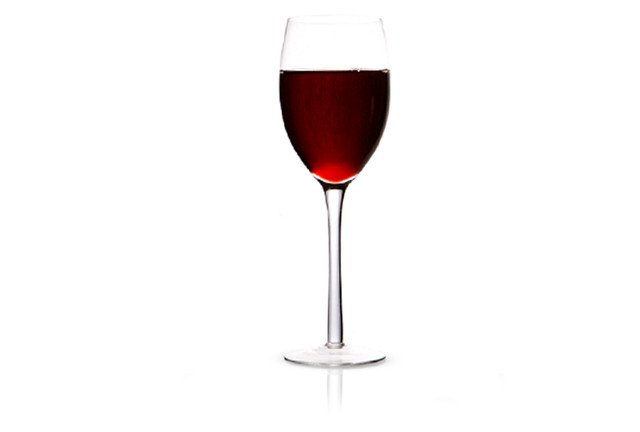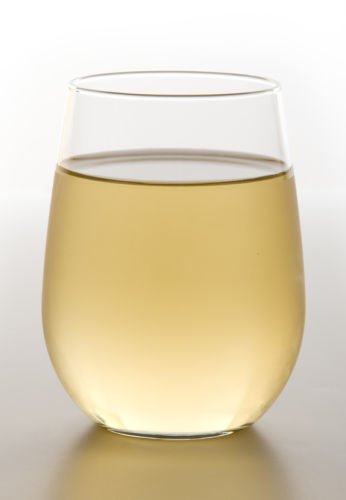Eating Habits VII - Tablescape
Wherever you eat, a dining room table, a coffee table or your lap, you will have what is referred to as a 'tablescape' influencing how much you eat1.
The size of your plate is one such factor. It has been reported that we can save roughly 60 calories per day by simply swapping our 12 inch plates to 10 inch ones2. The mechanism is as simple as how big it looks, 1 cup of pasta on your 10 inch plate looks like a starter on the 12 inch one. The inevitable result is seconds and thirds if you feel short changed.
The same findings have been demonstrated with bowls3, serving spoons4 and glasses2. As a general rule I recommend not to drink calories. However where you do, it has been shown you will poor more into a larger glass than a small one, and you will poor more into a wider glass than a tall one of the same volume.
Figure 1: We will tend to, on average pour more juice into the wider glass than the tall one, even though the two glasses hold the same capacity.
FUNNY FACT
It seems as though it does not matter how educated (we think) we are or appear when it comes to portion distribution. When a group of former nutritional science researchers got together for an ice cream social the serving scoops were sneakily arranged big or small (subtly). It turned out that even world renowned experts in the field distributed 14 percent more ice cream when they had the larger spoon. We judge portions in scoops, not by how much we actually give!5.
*I measure my ice-cream (my 10% indulgence), approximately 120 grams. One robotic way to defeat my human nature!!
Figure 2: Measuring scales is one way of not being dictated by serving spoon size. Its worth reiterating here that ice cream is considered part of 10% 'junk food'. The science of smaller bowls help us to moderate foods in the bulk of our diet also - soup, pasta, cereal and finger foods (nuts for example)....
What about wine glasses? As I discussed HERE, a glass or two of wine can absolutely be a part of a balanced, nutritious lifestyle, so it would be remiss of us to not look at the influence our wine glasses have on our waistline.
Walker et al. brought 85 wine drinkers in for happy hour and gave them different wine glasses and observed drinking trends.6.
Here is the abstract from their study, or simply skip to my summary below:
"Wine drinkers often pour their own wine, but is the amount they pour influenced by the shape of the glass, the color of the wine, or how they pour? Building on research involving visual illusions and haptic cues, an exploratory field study shows that while wine drinkers typically poured 3.95 fl. oz. of wine into a standard baseline (10 fl. oz.) glass, they poured 11.9% more into a wider glass, 9.2% more when the wine was white (the low contrast with the glass makes it difficult to see), and 12.2% more when the wine glass was held in their hand rather than sitting on the table. Using narrower wine glasses and not pouring while holding one's glass may be steps toward modestly reducing the amount of wine a social drinker pours and drinks."
If you didn't take the key points from that passage:
We pour more into wider glasses than tall ones of the same volume
- We pour more white than red as it doesn't contrast the glass as well
SUBLIMINAL TRICKS
SCALE EVERYTHING DOWN: 10" PLATES, SMALLER SERVING SPOONS, SMALLER BOWLS, REPLACE SHORT WIDE GLASSES WITH TALL SLIM ONES
DRINK RED WINE OUT OF TALLER SLIMMER GLASSES
Figure 3: It seems a useful tip to consider drinking red from a tall glass as oppose to white from a short wide. Remember this is just a subliminal trick to aid moderation. Simply refilling the tall slim one would completely unravel any benefits the research tells us.
We are now familiar with what our tablescape is and what role it plays on our waistline.
Next up; snacking for your 90% whole and minimally processed food. Everyone wants to know about snacking.
Luke R. Davies :)
REFERENCES
2. Wansink, B. (2016). Slim by Design: Mindless Eating Solutions for Everyday Life, Noting Hill Gate, London, UK.




